Sleeping Beauty (2011 film)
5.2 /10 1 Votes
Country Australia | 5.2/10 IMDb Genre Drama, Romance Duration Language English | |||||||||||||||||||||||||||||||||
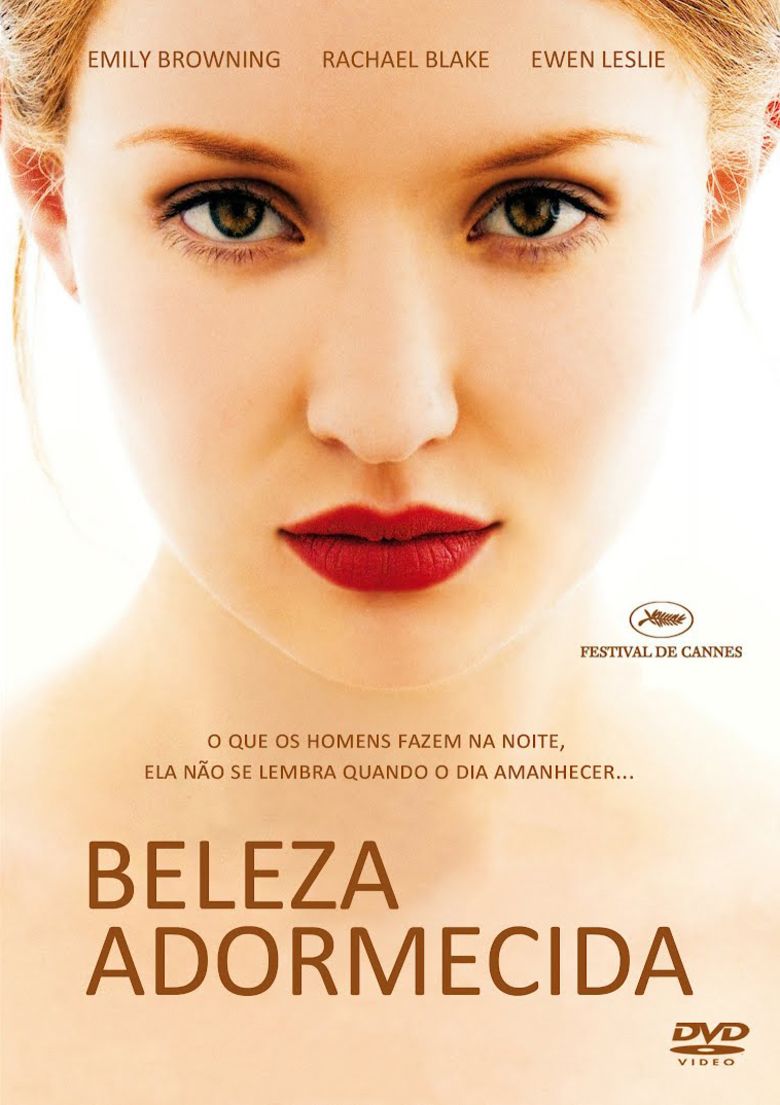 | ||||||||||||||||||||||||||||||||||
Release date 12 May 2011 (2011-05-12) (Cannes Film Festival)23 June 2011 (2011-06-23) (Australia)2 December 2011 (2011-12-02) (United States) Initial DVD release February 27, 2012 (Sweden) Nominations AACTA Award for Best Production Design Cast Similar movies Paprika , The Lover , The Ages Of Lulu , Dead Ringers , Zandalee , Irreversible Tagline Awaken to a World of Wonders! | ||||||||||||||||||||||||||||||||||
Sleeping beauty 2011 official trailer hd
Sleeping Beauty is a 2011 Australian erotic drama film that was written and directed by Julia Leigh. It is her debut as a director. The film stars Emily Browning as a young university student. She takes up a part-time high-paying job with a mysterious group that caters to rich men who like the company of nude sleeping young women. Lucy is required to sleep alongside paying customers and be absolutely submissive to their erotic desires, fulfilling their fantasies by voluntarily entering into physical unconsciousness.
Contents
- Sleeping beauty 2011 official trailer hd
- Sleeping beauty official trailer emily browning movie 2011 hd
- Plot
- Production
- Filming
- Reception
- Popular response
- Response of filmmakers
- Awards and honours
- Academic attention
- References
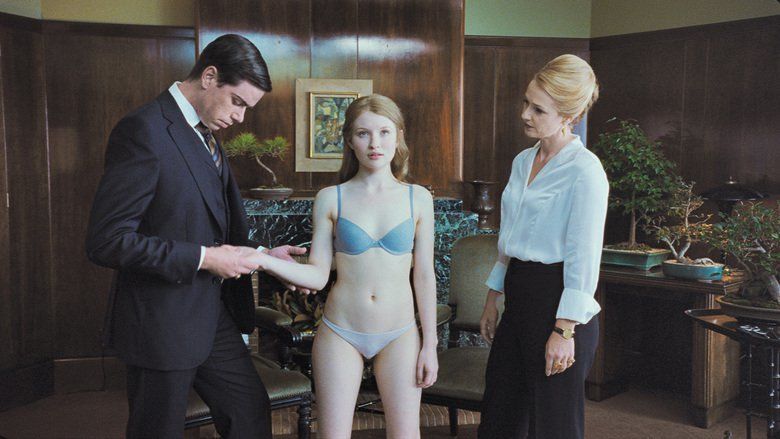
The film is based on influences that include her own dream experiences, and the novels The House of the Sleeping Beauties and Memories of My Melancholy Whores by Nobel laureates Yasunari Kawabata and Gabriel Garcia Marquez, respectively.

The film premiered in May at the 2011 Cannes Film Festival as the first Competition entry to be screened. It was the first Australian film In Competition at Cannes since Moulin Rouge! (2001). Sleeping Beauty was released in Australia on 23 June 2011. It premiered in US cinemas on 2 December 2011 on limited release. Overall critical reception of the film has been mixed, rising to some approval through June 2016, after circulation of the film on the festival circuit; audience reception, on the other hand, has been weak (less than a third of a sample of tens of thousands approving).
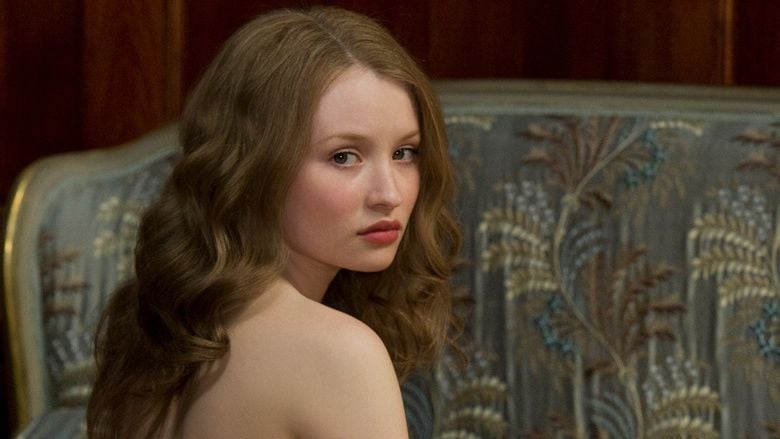
Sleeping beauty official trailer emily browning movie 2011 hd
Plot

Lucy (Emily Browning) is a university student who works in an office in the daytime and at a restaurant in the evenings. She is occasionally a research subject at a science laboratory.

Lucy is paying tuition and rent by doing several jobs. She is caring for a sick relative, Birdmann (Ewen Leslie) who is very attracted to her. While she does not return his sexual interest, Lucy enjoys Birdmann's company, and in his presence is the only time she is shown smiling or laughing. An old joke between the two is that Birdmann frequently asked Lucy to marry him; Lucy always says no. Due to lack of money and Birdmann's bad health, Lucy makes a decision to look for another part-time job.
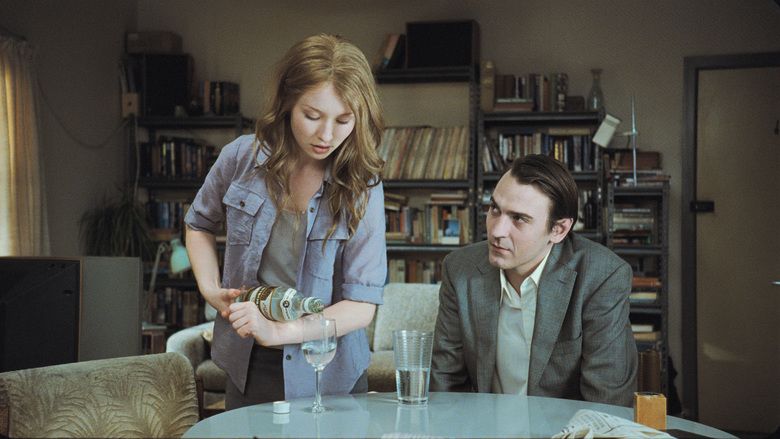
In response to a classified ad for yet another short-term job, Lucy meets Clara (Rachael Blake), who runs a service that combines lingerie modelling and catering performed by young women at a black tie dinner party for male clients. Clara assures her that the men are not allowed to touch the women sexually, and Lucy agrees to try it. Clara inspects Lucy's body and names her "Sara" for the purpose of anonymity. At the dinner party, Lucy is the only girl dressed in white; the other women wear black lingerie that is much more revealing than Lucy's costume.
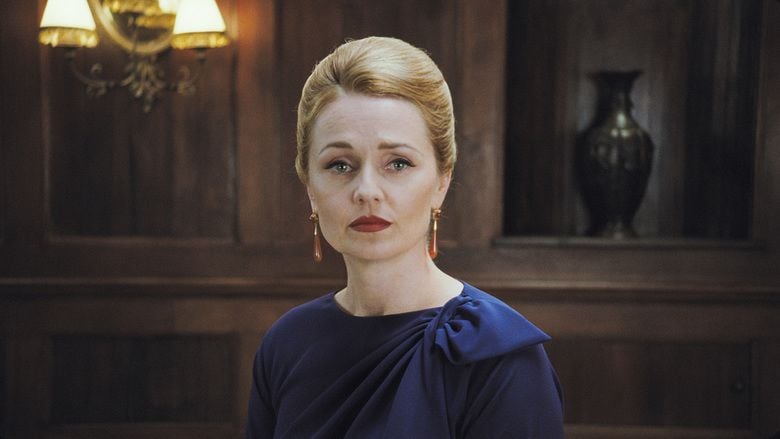
After one other session as a serving girl, Lucy gets promoted. She receives a call from Clara's assistant Tom (Eden Falk) for a different request. Lucy is driven to a country mansion, where Clara offers Lucy a new role wherein she will be voluntarily sedated and sleep naked while male clients lie beside her. They are permitted to caress and cuddle her, but penetration is not allowed. After Lucy falls asleep, she lies unconscious on the bed and Clara leads in her client. After Clara reminds the man of the no-penetration rule, he strips and curls up beside Lucy.
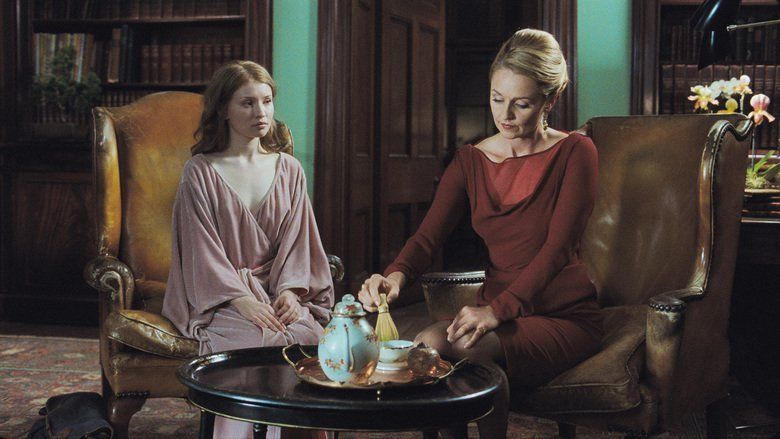
After a few of these sessions, Lucy has enough money to move into a larger, more expensive apartment, where she lives alone. She receives a call from Birdmann, who has overdosed on painkillers. She goes to his house and finds him dying in his bed. Sobbing, she takes off her shirt and gets in bed with him, but he dies in her arms. At Birdmann's funeral, Lucy abruptly asks an old friend if he will marry her, in an echo of Birdmann's old playful banter. The friend, however, not understanding the reference, takes her seriously and, shocked, refuses her, citing a number of Lucy's personal problems as his reasons.
At her next assignment with Clara, Lucy asks if she can see what happens during the sessions while she is asleep. Clara refuses, saying it will put her clients at risk of blackmail. Lucy decides to surreptitiously film her next encounter. The client is once again the first man, but this time, he also drinks the tea with a much larger dose of the sleeping drug.
The following morning, Clara comes in and checks the man's pulse, showing no surprise when he cannot be awakened. Clara tries to wake Lucy, who has overdosed as well, and is eventually able to revive her using mouth-to-mouth resuscitation. Lucy begins screaming when she sees the dead man in bed next to her.
The film ends with the scene captured by the hidden camera: the dead old man and the sleeping girl both lying peacefully together in bed.
Production
Writer and director Julia Leigh, primarily a novelist, said in an interview with Filmmaker Magazine that she initially wrote the film without the intention of directing it. In writing the script, Leigh drew from several literary inspirations, including Yasunari Kawabata's House of the Sleeping Beauties and Memories of My Melancholy Whores by Gabriel Garcia Marquez, as well as the eponymous fairytales by Charles Perrault and The Brothers Grimm, and the biblical story of an old King Solomon who had young virgins brought to him from all over his realm to sleep alongside him. She also noted the phenomenon of images of sleeping girls on some of the fetish websites. Kawabata's novel had been adapted in 2006 by German director Vadim Glowna, as Das Haus der Schlafenden Schönen (House of the Sleeping Beauties), but had been released to generally negative reviews.
The Sleeping Beauty script made the 2008 Black List of unproduced screenplays grabbing attention in Hollywood. In September 2009 the project was approved for funding from Screen Australia. In February 2010 it was announced that Emily Browning would play the lead role. Mia Wasikowska was originally cast as Lucy but she dropped out when offered the title role in the adaption of Jane Eyre.
Filming
Principal photography on the film began on April 3, 2010, at University of Sydney, Camperdown and downtown Sydney, New South Wales, Australia.
Reception
Reception of the film has included mixed critical and audience reviews, with evolution in critical reception toward positive after its appearance in festival circulation. As of June 2016, Sleeping Beauty (2011) has received "mixed or average reviews" from the aggregate of 20 critics appearing at Metacritic.com, with a mean score of 57 on a 100-point scale from these professional reviewers; the aggregate audience score (user score), as of this date, at this site, reflected "mixed or average reviews" (<50 ratings). As of the same date (June 2016), the film has failed to achieve a critical consensus at rottentomatoes.com, where the 90 professional reviews to that date are evenly split between approval and disapproval ("fresh" and "rotten")—with scores of 5.2 and 5.5 on a 10-point scale for all and top critics, respectively (49 and 52% "likes," respectively); the aggregate audience score, as of this date, at this site, reflected disapproval of more than 2 in 3 viewers (32% likes, >65,000 ratings, scoring an average of 2.7 on a 5-point scale).
In a review from the 2011 Cannes Film Festival , Peter Bradshaw of The Guardian called the film "Technically elegant with vehemence and control ... Emily Browning gives a fierce and powerful performance ... There is force and originality in Leigh's work". David Rooney of The Hollywood Reporter called it "soporific in every sense", Ian Buckwalter of NPR noted the film's "sexless and sterile" approach to its erotic material, saying, "This Sleeping Beauty is no fairy tale; it's stark, dispassionate and noticeably short on happily ever afters". Salon reviewer Andrew O'Hehir found it "Gorgeous, opaque and disturbing". James Rocchi in Indiewire was also a fan, saying: "This is a hothouse flower, beautiful and delicate and yet surprisingly hardy and potentially toxic". On its US release, A. O. Scott in The New York Times found the film "seductive and unnerving in equal measure" while also observing that "the tone is quiet and the pacing serenely unhurried" and that "Sleeping Beauty is at times almost screamingly funny, a pointed, deadpan surrealist sex farce that Luis Buñuel might have admired".
Sleeping Beauty was a film festival fixture, showing in over 50 major festivals worldwide in 2011-2012. In addition to festival screenings, Sleeping Beauty was distributed commercially into 45 territories (over 65 countries).
Popular response
The global reception of the film, as reflected by audience ratings, showed a significant level of disapproval, with only 32% of viewers expressing positive feedback from over 65,000 ratings, resulting in an average score of 2.7 out of 5. Despite this, when "Sleeping Beauty" was first broadcast on the SBS World Movies pay TV channel in Australia in September 2012, it garnered the highest ratings among the films shown on the site at that time. It eventually became the highest-rated film ever aired on the World Movies channel.
Response of filmmakers
Director Dan Sallitt in Notebook analysed literary and film devices employed by the film in 2012, and recognised intentional elements of humour. Sallitt states that "Leigh’s emphasis on the routine, rigid aspects of social institutions within a Kubrickian mise-en-scène puts Sleeping Beauty in the realm of the horror film, just as all Kubrick films are effectively horror films."
In an article on director Ralph Pitre's blogspot, Adam Nayman follows Sallitt and compares the techniques used in Sleeping Beauty to those of James B.Harris in his 1973 Cannes film Some Call It Loving, referring in passing to the common influences of Kubrick, Buñuel and Haneke
Awards and honours
Actor Jude Law, a Cannes jury member, stated in a press conference that Sleeping Beauty had just missed out on one of the major awards at the Cannes film festival at which it premiered. Julia Leigh won Best Director for Sleeping Beauty at the 2011 pt:estival-de-Cinema-de-Sitges received a Special Mention at the Stockholm International Film Festival 2011 for the film, for "…its ability to provoke and at the same time start an intellectual discussion about the things that it hurts to talk about" and in July 2012 won Best Director in a First Feature Film at the Durban International Film Festival. In May 2012, on the anniversary of her Cannes debut, Julia Leigh received the top award of the Australian Directors' Guild, Best Direction in a Feature Film. The New Statesman awarded Julia Leigh a 2011 Cultural Capital Award for Best Newcomer Director.
Emily Browning won best actress awards for her work in the film, at The Hamptons (USA) and Kiel (Germany).
Academic attention
Sleeping Beauty has attracted attention from students and faculty in academia. In Film Quarterly in 2011, Genevieve Yue compared the Catherine Breillat film The Sleeping Beauty to the Leigh film, in detail. Emma Deleva, writing in Cahiers du Cinéma in 2011, discussed the controversy over the French R16 classification and the distributor's unsuccessful appeal against it. In 2012, Lesley Chow, writing in Bright Lights Film Journal, discussed other literary aspects relevant to the film, including the symbolic use of sleep as a metaphor. This line of argument was extended by Meredith Jones in 2014, in a paper in the International Journal of Cultural Studies, where Sleeping Beauty was argued to represent sleep as the "anti-matter to the neo-liberal imperative of Just Do It.". In 2014, Kyra Clarke argued that Sleeping Beauty "highlights the importance of placing aside" conventional media expectations of girls, accepting, rather, "the challenge of confused and imperfect representations" enabling "recognition of the heteronormative constraints that structure society" (in a paper in Studies in Australian Cinema). Kendra Reynolds concludes a paper in the Journal of International Women's Studies stating that "through her anti-tale Leigh provides the resuscitation needed to revive feminism from its premature bed in order to ensure that the real Sleeping Beauty, the true female identity, will not sleep forever.". In a 2016 University of Montreal Masters thesis, Laurence Lejour-Perras, comparing Sleeping Beauty with Anatomy of Hell (Catherine Breillat 2004), Nuit#1 (Anne Émond 2011) and Klip (Maja Milos 2012) shows how these female directors deconstruct the female gender stereotypes of passivity and modesty, thus deliberately thwarting the spectator's erotic experience.
References
Sleeping Beauty (2011 film) WikipediaSleeping Beauty (2011 film) IMDb Sleeping Beauty (2011 film) themoviedb.org
